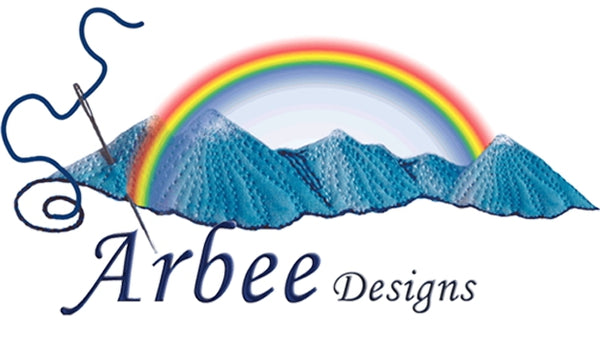Blending Paintstiks on fabric was a lot of fun but now I need to move on to creating a background to add my flower to. I'll try a new technique (one that I describe as back to front applique), and another I've been being doing for years - playing with sheer fabrics. Let me show you!
First for the new, this back to front applique technique.... you see, instead of fusing the back of a fabric to cut it out, I made a sandwich of backing, batting, and fusible webbing - in that order so the fusible was on top. So instead of fusing the back of each fabric, I will simply cut pieces of green fabric and lay them on top of the fusible. Make sense?

I cut wedge shapes of the fabric and positioned them in a circular position - this worked well. I used a Teflon sheet to press the fabrics in place - just in case some fusible was still uncovered.... a really important tip!
I won't do any stitching yet, but with the background built up I can audition my flower.

Looking good! However, my thoughts are to soften the background a little so I pulled out a couple of sheer fabrics to see how that effect may look - this technique of adding sheer fabrics I've been doing for many years. In fact, it reminds me of my much loved quilt "Native NZ" that I created 20 odd years ago.

You can read another blog post about this technique here: Using Sheers
The first sheer fabric was white and the second had wide bands of orange and blue across it. Although difficult to see in the photo, I was drawn to the change in color so I picked the latter.

With the background organized, now it was time for my favorite part - free-motion stitching. I pulled 3 shades of pink thread from my stash and set up my machine ready to start.

Usually I start in the center and work out but this time I decided to start with the outer edges of the petals and the light pink thread. Looking at the photo below, you can see I stitched around the edge first then added more stitching within the petal shape blending into the darker painted area just a little.

I repeated this for all the petals...

Do you notice how the sheer fabric is making it appear the flower is floating?
Back to stitching... and next I added the darkest pink, starting in the center.

....and then, finally the middle shade of pink thread to blend the other two shades together.

The effect turned out quite well and I feel at this point I might have enough stitching done on the flower so it is time to move on to selecting green threads for the background - again I chose three.

I started stitching with the lightest thread on the lightest green fabrics - no need to blend these greens together.

How's it looking?

To finish off, I added the following:
- outlined the entire flower with the medium pink thread
- added a stamen with a little light pink stitching
- finished the stamen with gold beads
- and finally trimmed the block to an 8" square.

Can you tell I had a lot of fun? I'm almost tempted to make another. However, if you remember back to week one, there was a second part to this Stitch Along. I'll repeat that here:
Make the block again but change it out. The change could be done in several ways:
- Use the same technique with a different photo.
- Use the same photo but a different technique.
- Use the same photo and same technique, but swap out the fabrics or use a completely different color scheme.
- Use the same photo, same technique, and same fabrics to create a different sized block - larger or smaller.
Of course, you can mix it up in anyway you like. Be sure to check in next week to see what I will do. I'd better get my thinking cap on! See you then...



